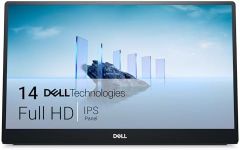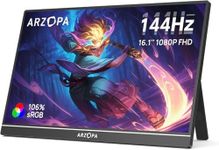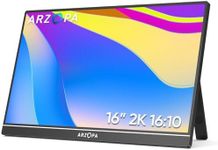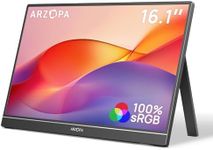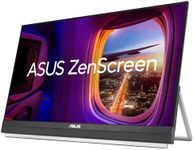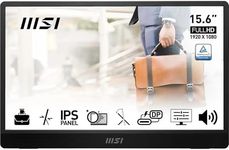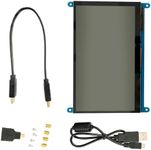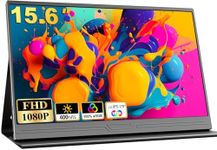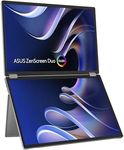Buying Guide for the Best Portable Monitors
When choosing a portable monitor, it's important to consider how you plan to use it. Whether you're looking for a second screen for work, gaming, or creative projects, understanding the key specifications will help you find a monitor that fits your needs. Consider where you'll be using the monitor most often, as this can influence the size, weight, and connectivity options that will work best for you.Screen SizeScreen size is the diagonal measurement of the display area, usually measured in inches. It's important because it affects how much content you can see at once and how portable the monitor is. Smaller screens, around 13-15 inches, are more portable and easier to carry around, making them ideal for travel. Larger screens, 17 inches and above, provide more workspace and are better for multitasking or detailed work but are less portable. Choose a size that balances your need for screen real estate with your need for portability.
ResolutionResolution refers to the number of pixels on the screen, typically described as width x height (e.g., 1920x1080). Higher resolutions mean more detail and sharper images, which is important for tasks like photo editing or watching high-definition videos. Common resolutions include Full HD (1920x1080), which is suitable for most tasks, and 4K (3840x2160), which offers even more detail but requires more powerful hardware to run smoothly. Consider what you'll be using the monitor for and choose a resolution that provides the clarity you need.
ConnectivityConnectivity refers to the types of ports available on the monitor, which determine how you can connect it to other devices. Common options include USB-C, HDMI, and DisplayPort. USB-C is popular for its versatility and ability to carry power, video, and data through a single cable, making it ideal for modern laptops and tablets. HDMI is widely used and compatible with many devices, while DisplayPort is often preferred for high-performance displays. Consider the devices you'll be connecting to and ensure the monitor has compatible ports.
WeightWeight is an important factor for portability, as it affects how easy it is to carry the monitor around. Lighter monitors, typically under 2 pounds, are easier to transport and ideal for frequent travelers. Heavier monitors may offer more features or larger screens but can be cumbersome to move. Consider how often you'll be carrying the monitor and choose a weight that won't be a burden.
Refresh RateRefresh rate is the number of times the screen updates with new information per second, measured in hertz (Hz). A higher refresh rate results in smoother motion, which is important for gaming and fast-paced video content. Standard monitors have a refresh rate of 60Hz, which is sufficient for most tasks. However, if you're a gamer or plan to watch a lot of action-packed videos, you might prefer a monitor with a refresh rate of 120Hz or higher for a smoother experience. Consider your primary use case when deciding on the refresh rate.
Color AccuracyColor accuracy refers to how accurately a monitor can display colors compared to real life. This is crucial for tasks like photo and video editing, where precise color representation is important. Monitors with higher color accuracy will have better color reproduction and are often measured by their coverage of color spaces like sRGB or AdobeRGB. If you're a creative professional, look for a monitor with high color accuracy. For general use, standard color accuracy should suffice.
